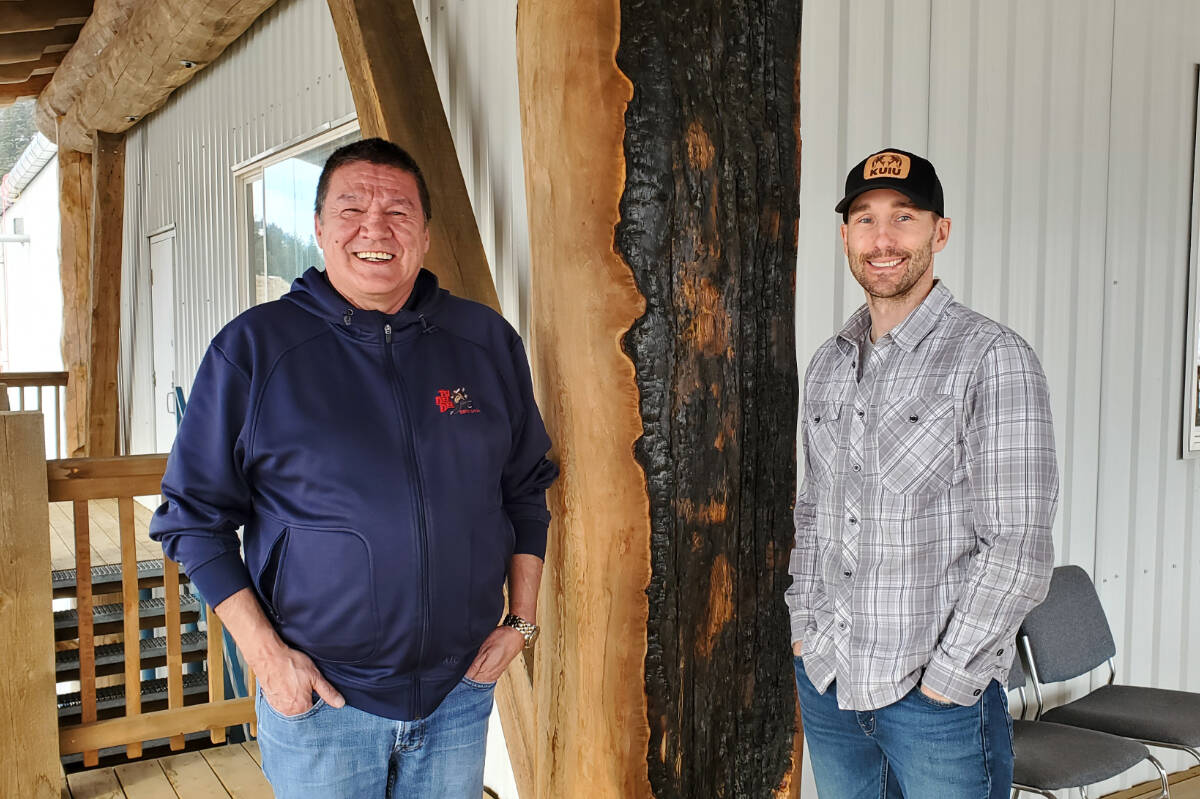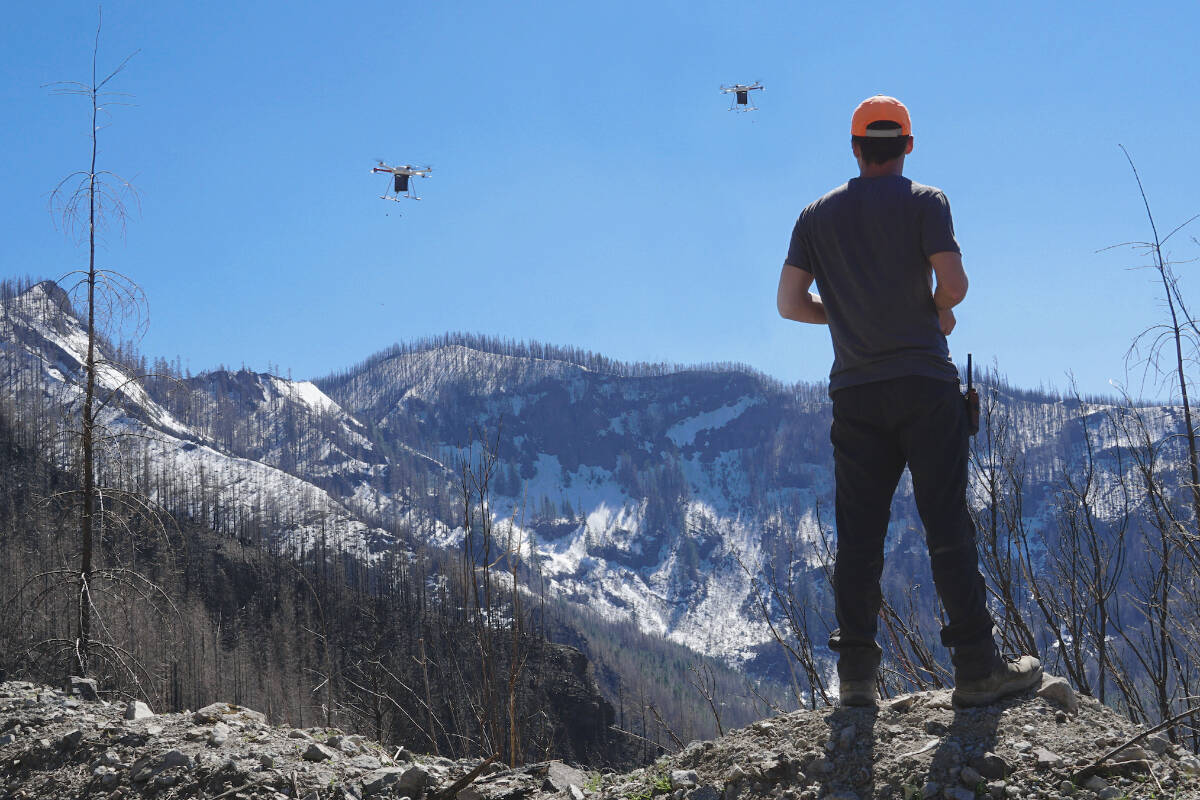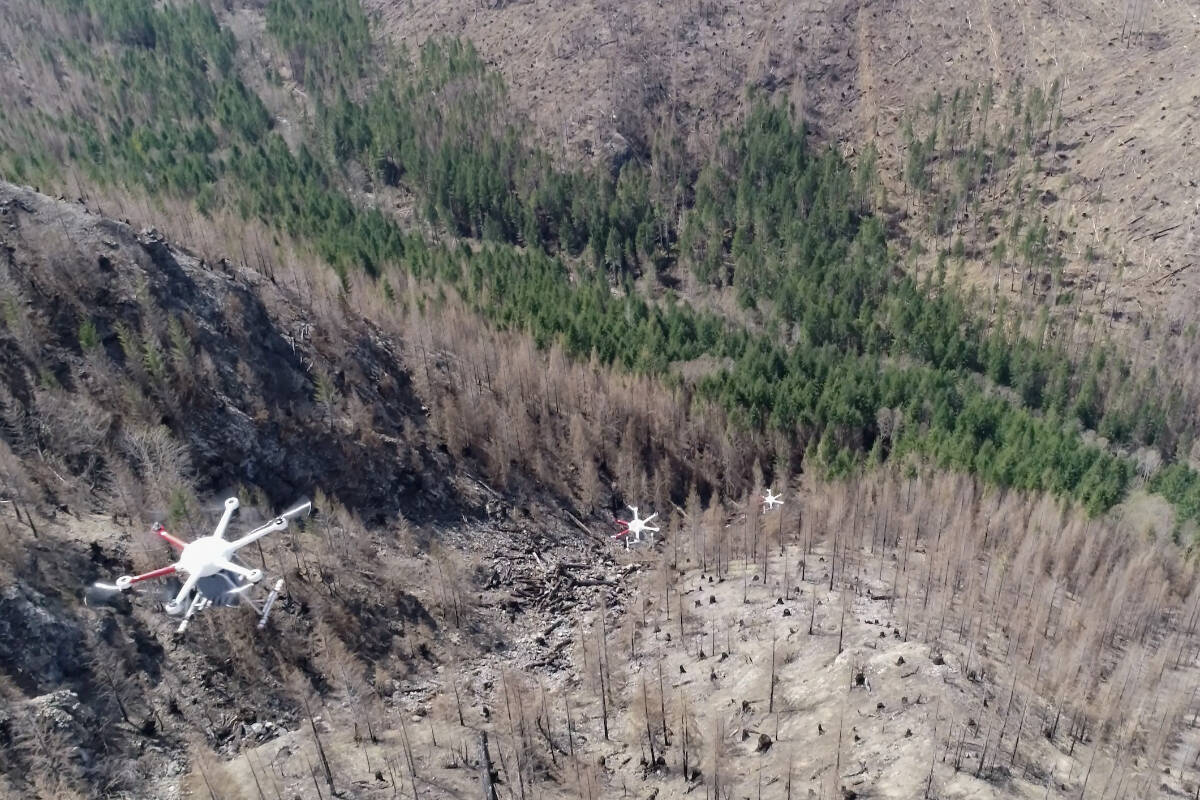A company comprised of two First Nations in B.C.’s Interior is using drones to reforest areas devastated by wildfires.
Last November, 1,000s of Lodgepole pine and Douglas-fir tree seeds were dropped by five drones in a 52-hectare portion of the Chilcotin Plateau which was razed by the White Lake wildfire in 2017.
Supported by the Forest Enhancement Society of BC (FESBC), Central Chilcotin Rehabilitation (CCR), a joint venture of Tsideldel First Nation and Tl’etinqox Government, teamed up with the Seattle-based company DroneSeed for the trial project.
Danny Strobbe, forestry superintendent of Tsi Del Del Enterprises Ltd., told the Tribune the seeds were purchased in B.C. and shipped to DroneSeed.
“They manufacture these pucks or seed vessels which contain one to three seeds,” he said. “The drone is loaded with a box of pucks and when flown over an area turns and spits out the pucks.”
Each puck has nutrients and soil to help establish the seed.
When the puck gets wet, it helps hold the moisture longer and hopefully establish the seed.
For the project, the drones flew during a two-week period dispersing about 10,000 pucks per hectare. Each drone could carry about 57 pounds of the seed pucks at a time.
Initially a survey was done using light detection and ranging (LIDAR) technology to determine where to drop the seed pucks, preferably in soil not gravel or rocks.
The drones flew in a grid mapped out beforehand and as the pucks fell from the drone a little ticker recorded where each one landed.
An advantage of using the technology is the fact it makes it easier to seed areas with steep inclines, swamps and danger trees.
In some areas grass has come in so thick that seeds coming from adjacent trees land in the grass and don’t hit the soil, Strobbe said. He noted in the future, seeds can be sent off to DroneSeed and then the company could return within 60 to 90 days of a wildfire to do the reforestation.
Historically seeding is done directly, but the germination success rate is extremely low, and was particularly low after the 2017 wildfires.
Percy Guichon, Tsideldel First Nation councillor and CCR director, noted the drone-seeding does not replace tree planting, but is another tool to in reforestation.
“This is another way to help the forest regenerate as fast as possible,” he said, noting the Tsilhqot’in are very proud of the fact they are leading in terms of utilizing new modern technology.
If the project proves to be successful the technology could be used in other areas, such as the huge steep hillside that burned during the Hanceville wildfire visible from the lookout on Highway 20.
“When you have those large areas where there are no trees left, and there is nothing coming in naturally, it is different than areas where you have patches of trees. We’ve seen some areas where there are kilometres and kilometres that were burned with no seeds coming in,” Strobbe said.
Guichon hopes the seed pucks will survive incidents such as the heat dome of 2021.
Depending on where some of the companies planted trees last year, they had a pretty high mortality rate of seedlings, he added.
There will be post-monitoring of the drone-seeding project through 2022, as well as some further planting of seedlings through DroneSeed’s other company Silvaseed in areas that might not have had success, to supplement the drone-seeding.
“We are already growing seedlings to fill-plant areas that have not had success,” Strobbe said.
Last year CCR planted 3.4 million trees in the Hanceville wildfire area through FESBC.
Strobbe has applied for funding from Natural Resources Canada to plant another 2.9 million trees this summer.
“Generations and generations relying on the land, and having the fire come through was very devastating for a lot of people,” noted Paul Grinder, Councillor, Tl’etinqox Government in a news release.
Planting trees is an important action in addressing climate change because growing forests absorb carbon, said FESBC operations manager Dave Conly.
“Reforestation of damaged areas supports healthy watersheds, wildlife habitat and re-establishes a forest ecosystem left barren by wildfire.”
READ MORE: New Forest Enhancement Society grants increase use of wood fibre in Cariboo Chilcotin
READ MORE: Tsilhqot’in National Government and Shell team up to plant 840,000 trees
news@wltribune.com
Like us on Facebook and follow us on Twitter
bc wildfiresChilcotinFirst Nations



